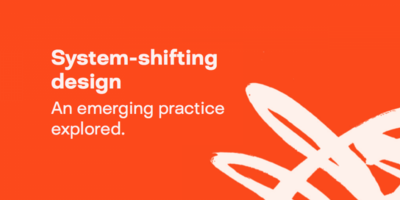Jesmonite

A brand redesign boosted this decorative building material manufacturer’s core sales and created a powerful platform for future growth.
Challenge
Jesmonite Ltd is a small but rapidly-growing manufacturer of a unique decorative building material called Jesmonite – a water-based moulding material used to make sculptural and architectural 3D shapes which can be cast or laminated to form highly refined designs (and is conceived as a safe alternative to fibreglass). Based in the Shropshire town of Bishop’s Castle, it has a staff of 12 and had turned over £1.2m as of June 2014.
In 2011, Jesmonite Ltd began working with UKTI to target export opportunities and successfully opened up new markets. The business also participated in a programme for SMEs which helped the directors hone their future strategy.
Sales were growing. Yet the company was struggling to convince architects, contractors and other specifiers to pay more for Jesmonite than for rival materials because Jesmonite’s unique benefits were still not widely understood.
We had not effectively created any coherent form of brand identity.
Simon Pearson, Managing Director, Jesmonite
“I appreciate design and thought I understood branding,” said Managing Director, Simon Pearson. “But I also knew that we had not effectively created any coherent form of brand identity – what we had was a logo that went on our packaging and website and letterhead.”
Eager to rectify this, the business approached Design Council for support.
What we did
The business needed a brand that was simple, bold and confident.
Ellis Pitt, Design Associate, Design Council
Design Associate Ellis Pitt was assigned by Design Council to work with Jesmonite and its management team. “The directors wanted Jesmonite to become ‘the ‘Rolls-Royce’ of building materials',” said Pitt. With this vision for the business in mind, together they embarked on a review of the business and its market.
Pitt explained further: “It seemed to me that they had the potential to achieve this vision. It was clear though that the business needed a brand that was simple, bold and confident. The key was to be more literal in its branding, to show through good design that Jesmonite is different from other materials, with the ultimate aim being that people start asking for Jesmonite by name.”
The next step the design associate took was to introduce the management team to a number of design agencies with appropriate expertise. Selecting the right agency is fundamental to the success of a project and so objective advice and guidance is crucial, particularly where the commissioner has little experience in a process such as this. Understanding how to run a pitching process and, vitally, what to look for enables the business to undertake a process like this again in the future.
This process led to the appointment of brand specialist Telling Stories, who worked closely with Jesmonite to refocus the business.
“One key challenge was to find a solution that would appeal to Jesmonite’s diverse audience,” said Faye Thompson, Telling Stories Design Director. “Another was finding a way to quickly and simply sum up the product proposition.”
Telling Stories developed two possible design solutions and a decision was eventually taken to proceed with that most distinct from the old branding, incorporating ‘made from’ into the brand identity by inserting the words vertically in place of the letter ‘i’.
Other important elements of the design solution include a list of key messages about what makes the product different, which are now clearly displayed on the company website’s homepage.
The designers also encouraged the business to invest in high-quality photography to demonstrate the different textures its product could produce. They worked with the directors to optimise and streamline its product range, developing a colour coding scheme to better label the packaging of all the different elements in Jesmonite’s streamlined product range.
Pearson said: “Jesmonite now has a brand that is totally world-class, which allows us to compete on the world stage for building materials with credibility and gravitas, without compromising the company’s British identity.”
Jesmonite launched its new branding in autumn 2014. However, the business’s relationship with Telling Stories is ongoing, with subsequent work in creating new marketing literature in different languages and further updating the Jesmonite website now completed. “I would now describe ‘Telling Stories’ as my branding and design department,” said Pearson, “it’s just that they are not in the same office.”
Results
What we came to see was that a powerful brand enhances your performance and that you can’t go all the way without it.
Simon Pearson, Managing Director, Jesmonite
Pearson is in no doubt that an increase of Jesmonite’s core sales to its distributors post-rebranding is a direct result of their investment in design. Furthermore, the business is on track to achieving its goal of trebling its £1.2m 2014 turnover within the next two to three years.
“We received a unanimous ‘wow’ from a very large percentage of our customers and distributors,” Pearson said. “This immediately created a virtuous circle with us being front and centre in our customers’ minds.”
It has also led to a cultural shift within the business and boosted corporate pride among the staff.
“One of the first things I said to Ellis – and Telling Stories – was that if they’ve come to change the logo they should think of something else, as we were happy with it. But that’s what we ended up doing as part of the overall rebrand because they made a compelling case and we were willing to listen. And looking back at what they delivered, of course they were right,” Pearson noted.
“What we came to see was that a powerful brand enhances your performance and that you can’t go all the way without it. What we achieved is analogous to a tailor-made suit: my company now looks good.”
Subscribe to our newsletter
Want to keep up with the latest from the Design Council?

